During the entire month of May, wineries on the Leelanau Wine Trail are celebrating Rosé wines with the Rosé All May event. The wineries on Leelanau Peninsula, Michigan are producing a wide range of rosés and during the month of May, the wineries are celebrating rosé wines.
The tickets at $20 a piece are good for the entire month of May. Wine enthusiasts can taste rosés at 23 different wineries. The list of wineries participating in Rosé All Day include:
- Aurora Cellars
- Bel Lago Vineyard & Winery
- BigLittle
- Black Star Farms
- Blustone Vineyards
- Boathouse Vineyards
- Chateau Fontaine
- Ciccone Vineyard & Winery
- 45 North Vineyard & Winery
- French Valley Vineyards
- Glen Arbor Wines
- Good Harbor Vineyards
- Green Bird Organic Cellars
- Laurentide Winery
- Leelanau Cellars
- M22 Tasting Room
- Mawby
- Rove Estate
- Shady Lane Cellars
- Silver Leaf Vineyard & Winery
- Two K Farms
- Verterra Winery
- Willow Vineyards
Tickets are available online.
Wine Trail Traveler has visited many of the northern Michigan wineries. Michigan winery articles and photos are available online.
In addition, we had the opportunity to stay at the Black Star Farms Inn during one of our visits to Michigan. We wrote a review of our lovely stay at the Inn.
Enjoy a visit to Leelanau Peninsula soon!
Cheers!
Kathy
-1.5in.jpg)


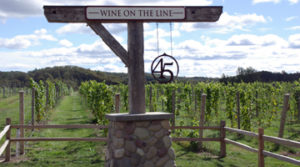
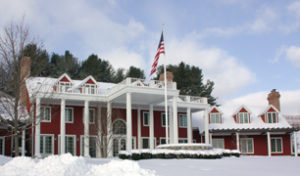

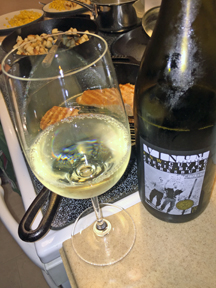
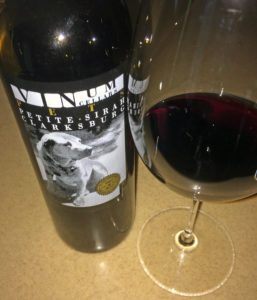
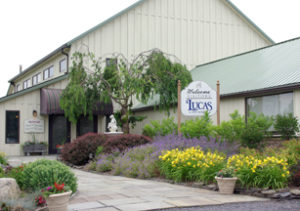
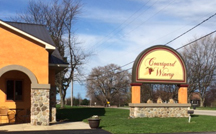
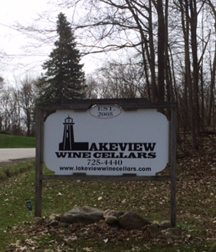
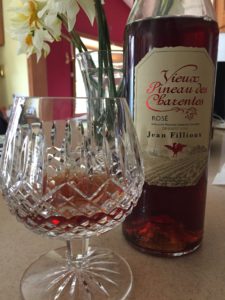
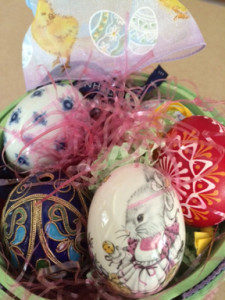
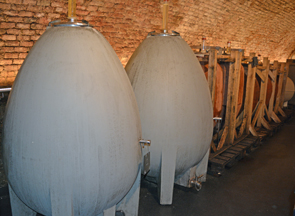
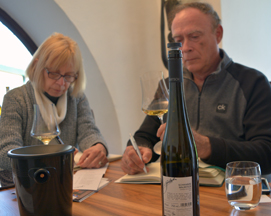

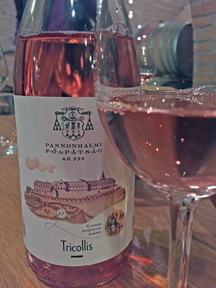
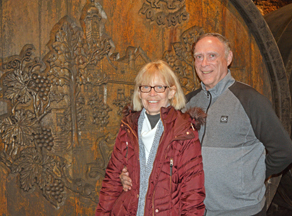

Day 11 of Visiting Hungarian Wineries
Pálffy in Hungary
On Thursday, our 11th day of visiting Hungary, we stopped at Pálffy Since and visited with Mr. Gyula Pálffy, who is the owner and winemaker. The winery is a boutique style. We walked to a small knoll where Gyula provided with us with a detailed description of the region. He commented that the land was once under the sea. One of his best comments was, “You just don’t sit down and drink wine, you have to work.” After viewing the landscape, we entered the cozy tasting room where he showed us rocks embedded with fossils from the area. We also enjoyed tasting a few of his wines.
Kreinbacher Estate
We then traveled to the second smaller wine region of Hungary, Somló, to learn about the Kreinbacher cellar in this region. At this modern-style winery we tasted wines and enjoyed lunch. In the Somló region, the main grape variety is Juhfark, a white grape variety. The Somló wine region is in the upper part of the Lake Balaton located about 30 kilometers from Lake Balaton.
Later we traveled to Villa Tolnay winery to taste wines. This winery is located in the Badacsony wine region. The enthusiastic owner and winemaker is originally from Switzerland and decided that vineyards and winemaking were more rewarding than the technology (IT) industry. As dusk was about to descend, we walked to the higher vineyards and viewed the vineyards and landscape surrounding the winery. Returning to the tasting room, we tasted several of the Villa Tolnay wines. Then we visited the old wine caves.
Villa Tolnay in Hungary
We returned to Hotel Zenit for another restful night. We knew that our last winery to visit was located at a Benedictine Abbey. Little did we know in advance what magnificent library we would also see.
Cheers!
Kathy and Terry